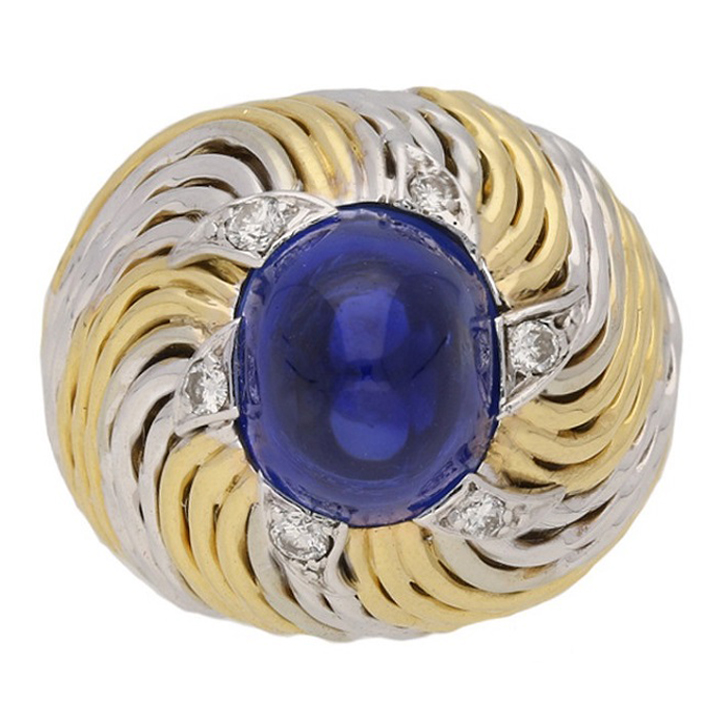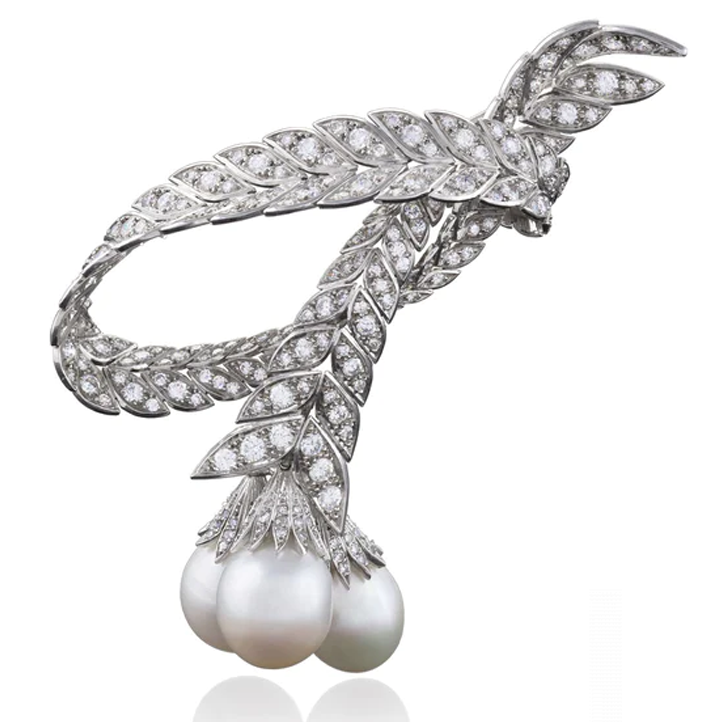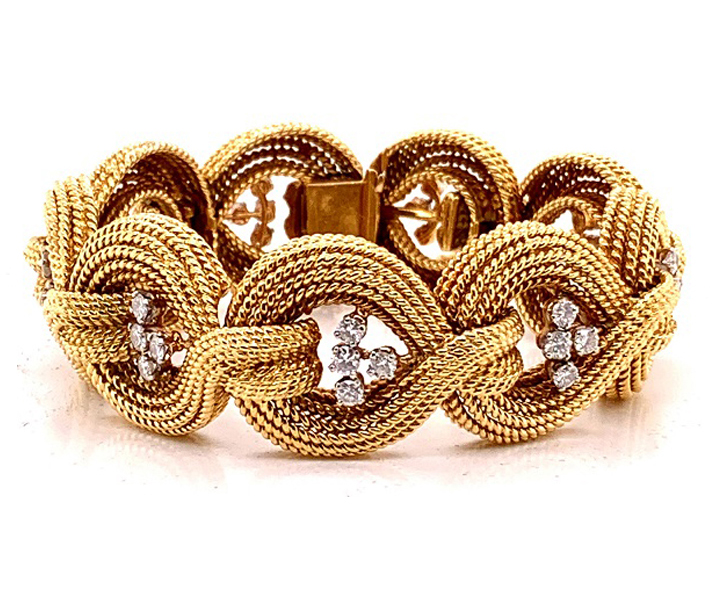A brilliant designer, jeweler Pierre Sterlé was the darling of the in-the-know fashionista set during the 1940s, 1950s and into the early 1960s. His innovative creations have left an indelible mark in the world of jewelry design, even though he is not as well-known as some of his peers from that era.
Born in France in 1905 to a family of bankers, Sterlé’s father died in World War I when he was still a young child. As a result Sterlé was sent to live with his uncle, Maynier-Pincon, who had a jewelry workshop in Paris, with a stellar reputation, that created for many of the big name design houses. Sterlé trained with his uncle and it was soon evident that he had an exceptional talent for making jewelry. It wasn’t long before he was making pieces for important design houses including Boucheron, Chaumet and Ostertag.
Sterlé Opens a Workshop
In 1934, Sterlé opened his own workshop and by 1939 he had a following of private clients who sought out his jewelry. In 1945 he moved his workshop to Avenue de L’Opera in order to be closer to Place Vendome where all of the wealthy and fashionable people shopped for luxury goods. Sterlé cultivated relationships with famous couture houses creating jewelry that complemented the haute couture of the day and along the way he picked up some clients. Because of his connections to the couture houses, Sterlé became known as the “couturier of jewelry”.

In addition to being design forward, Sterlé’s jewels were technical masterpieces showcasing his talent and innovation. He was inspired by nature and had a particular affinity for birds, wings and feathers as well as animals and flowers. His work was often asymmetrical giving it a sense of movement. One of the signatures of his work was his “angel wire” also sometimes called “angel hair”. He developed the technique in the late 1950s, which involved weaving and braiding gold wire into chain to create articulated fringe for his creations. His designs sometimes melded an abstract sensibility with figurative motifs, his pieces often looked like they were flying, dripping or frozen in place.
A bit of an elitist, Sterlé didn’t want his jewelry viewed by the masses, he wanted to keep his jewelry more exclusive for his high society clientele. He never had a street level storefront, instead he opted for an appointment only “upstairs salon” where his discerning clientele could have privacy while making their purchases. His clients included socialites and royalty of the day such as the Mahrani of Baroda and the Begum Aga Khan. He was also commissioned to design a crown for Queen Narriman, the wife of King Farouk of Egypt. The French author Colette was also a huge fan of Sterlé’s work.
De Beers Diamond Award
One of the highlights of Sterlé’s career was winning the De Beers Diamond Award for three consecutive years, 1953, 1954 and 1955. Another milestone in his career came when he was invited to exhibit at the Paris 1966 Bieneal, the first contemporary designer to show there.

While Sterlé was a fabulous jewelry designer and a master at his craft, he was unfortunately, not a particularly savvy businessperson. In the 1960s Sterlé decided to formulate a perfume to add to his offerings. The venture was expensive and not at all profitable, throwing his company into financial distress. He was forced to sell his inventory to survive. Sterlé recovered from that debacle and continued his business, but hit on financial hardship once again. This time his troubles led to the demise of the company. Sterlé got out of his financial woes by selling his business to Chaumet, a jewelry firm that was a long-time admirer of his work. The company asked Sterlé to be an in-house consultant for them. Sterlé accepted and remained with Chaumet until he passed away in 1978.
While he may be a relatively unknown name, Sterlé leaves behind a body of work that continues to thrill jewelry afficiandos. There are not a lot of Sterlé pieces on the market today, but if you are lucky enough to find one, you have found a rare treasure indeed.
Featured image (top of page): Diamond, gold, natural pearl and enamel brooch depicting a winged archer, possibly the Greek God Eros. Signed Sterlé and numbered with hallmarks. Courtesy Morelle Davidson.
Authored by Amber Michelle

